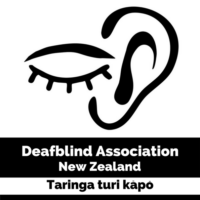Read Jessica Nelapovich’s speech as a Word doc (.docx 17 KB)
Return to 2023 seminar website section
Guide dogs are trained to assist people to avoid obstacles in the path of travel, indicate kerbs, respond to commands and find destinations. Research shows that in addition to these direct benefits, guide dogs also increase independence, companionship, socialisation and, to some extent, security and have some advantages over the long cane as both a mobility aid and in terms of improving the person’s status.
BLV NZ Guide Dogs currently provides service to 3 clients that identify as deafblind. This does not include an additional 11 clients that have profound dual sensory loss but do not identify as deafblind.
Some organisations train dual-purpose dogs to support deafblind clients. These dogs function as both guide and hearing dogs. In 2010 BLVNZ considered partnering with Hearing Dogs NZ for dual purpose training. At that time, the decision was made not to proceed for welfare concerns.
Hearing dogs support people by alerting them to important sounds and indicating the origin of the sound (such as a smoke alarm, or a baby crying). Research supports the view that hearing dogs reduce stress, increase feelings of safety, social activity and satisfaction with life.
A guide dog’s training is modified in preparation for matching to a deaf blind client. Examples include:
- A guide dog may be trained to respond only to signed commands or spoken commands, depending on whether an individual is non-verbal or has audiogenic dyslalia
- Precision targeting
- Modified behaviours, such as sitting to indicate
- It is worth mentioning that client specific specialisation is a component of all guide dog programmes. This is not specific to deafblind guide dog users.
It is recognised that guide dog mobility instructors should have specific training in working with people who are deafblind. The targeted training undertaken by all guide dog mobility instructors at BLV NZ includes:
- History of deaf blindness in NZ
- Main categories and causes of dual sensory loss
- Main causes of deaf blindness (for example, Usher Syndrome)
- Main organisations and services in NZ who work with deafness, blindness and deaf blindness
- Demonstrating how to contact, refer and work with NZ SL interpreter
- Demonstrating ways to include deafblind clients in group settings.
Feedback from deafblind clients:
“I was able to travel much more independently with the dog than with the cane. The dog helps me going up and down stairs, with barriers and to find places, as well as in avoiding puddles. I communicate with the dog using sign language and the dog can understand my signs.”
During a guide dog’s training, every verbal command is accompanied by a hand gesture. Once we’ve identified a dog is a suitable match to a deafblind client, training is modified to meet the needs of that client. This includes increased emphasis on hand gestures or signed commands and we also work with the client to teach the dog a range of hand signals, or signs.
Another client who is deafblind states, “the dog helps me psychologically as well as practically and having a guide dog encourages me to be more active. ‘I am more certain. The dog helps mentally, he makes me feel ok.’ I walk faster with the dog than the cane and would say that ‘There aren’t any [disadvantages]”
The indications in the literature are that people with vision loss are treated very differently according to whether they have a dog or a cane, and these are borne out by the experience of our handlers. Among the clear advantages of guide dog mobility are increased interaction with and access to communities, as well as an increased visibility of disability.
